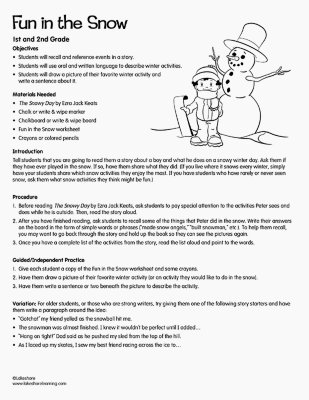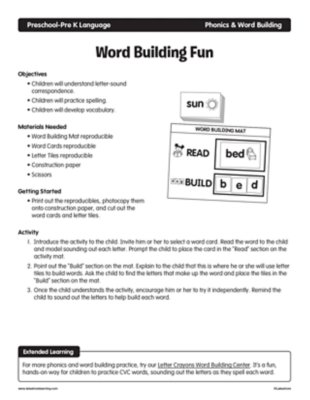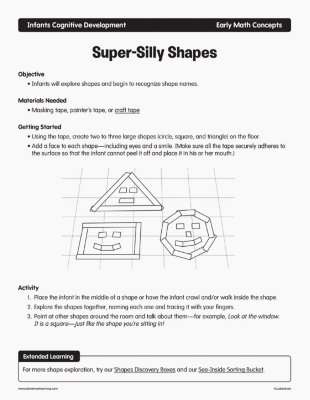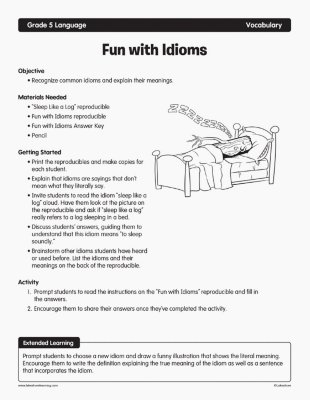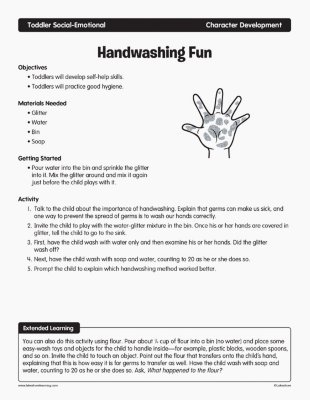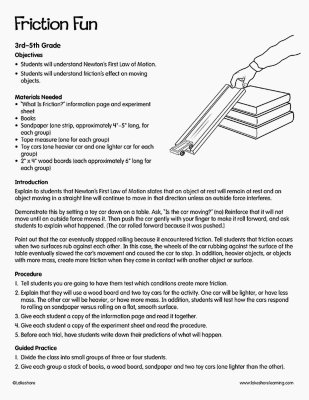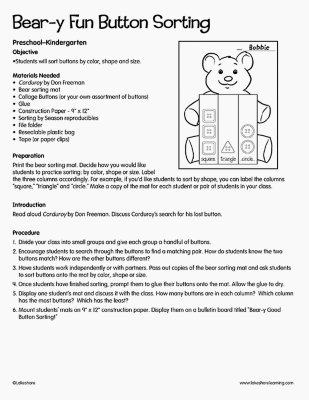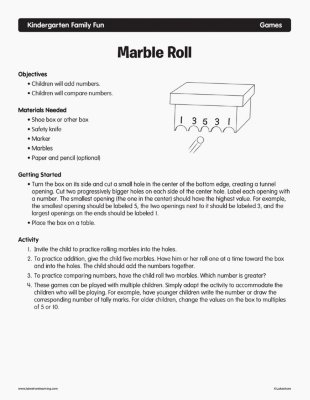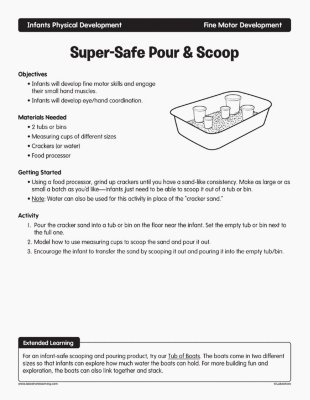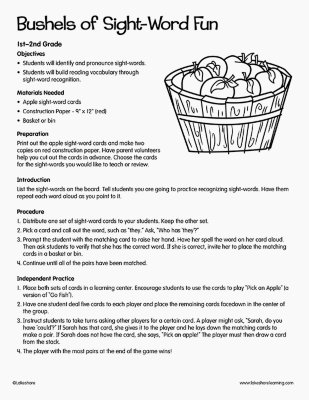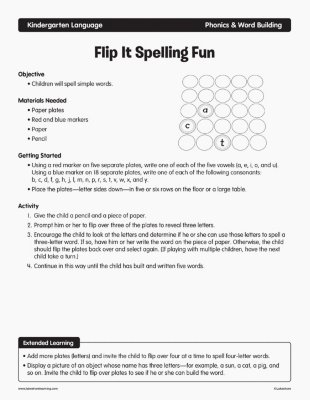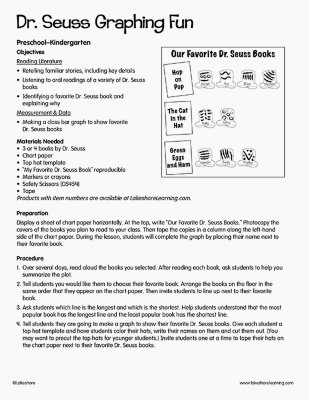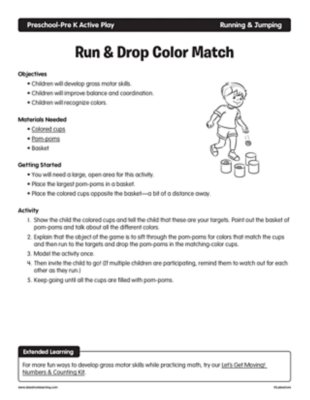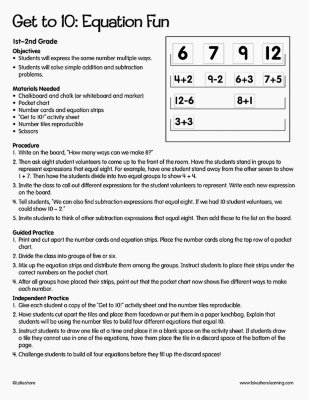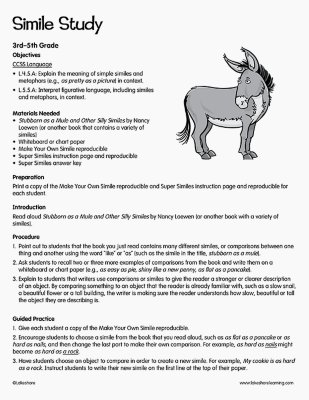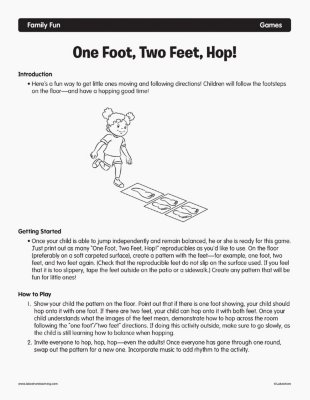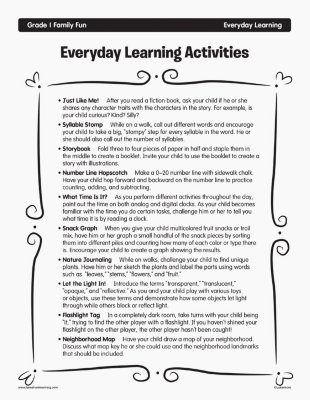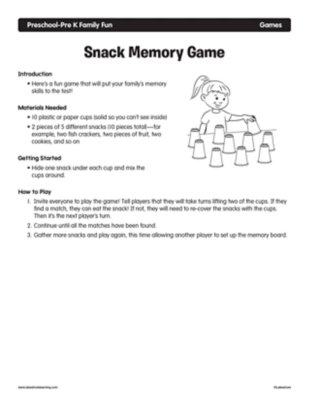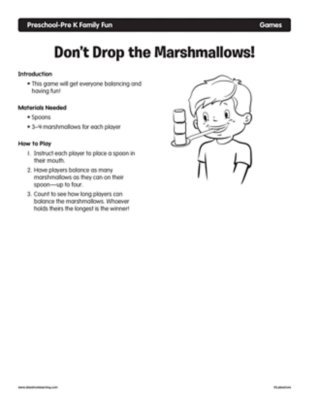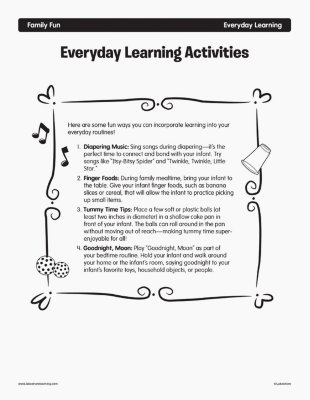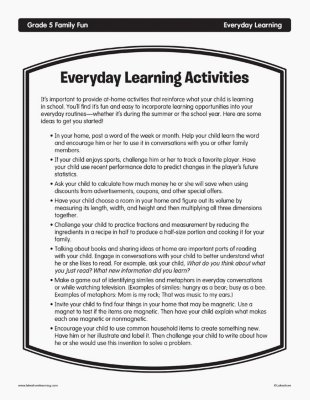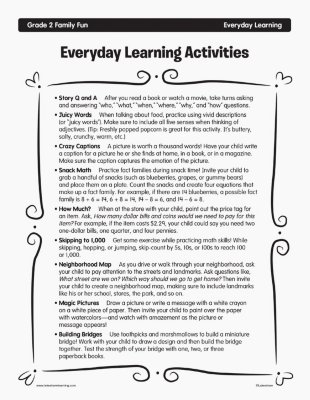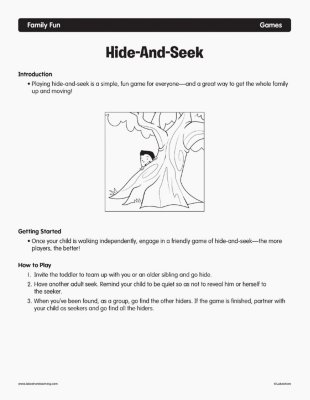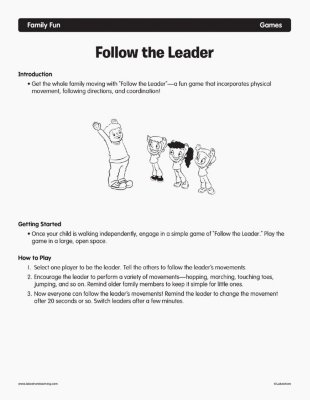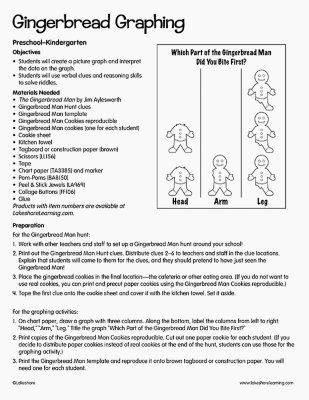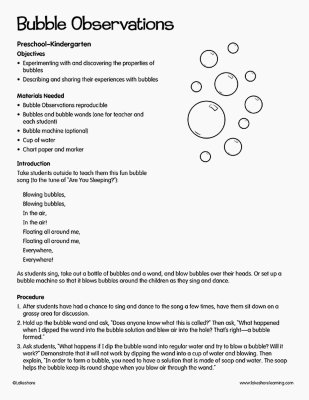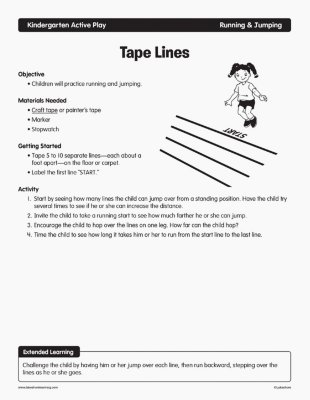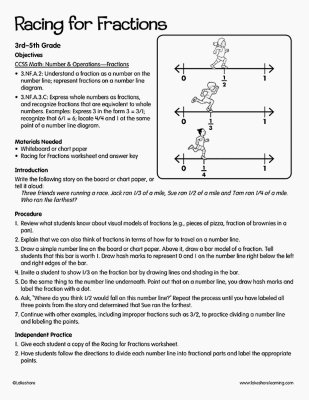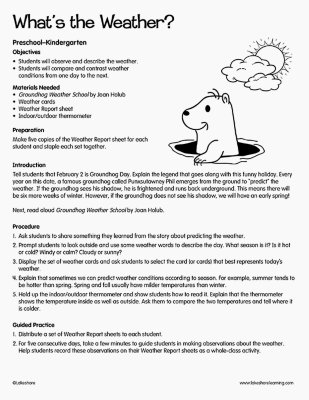Narrow by Grade
Grade
31 results for "super fun marble run"
Objectives
- Children will understand letter-sound correspondence.
- Children will practice spelling.
- Children will develop vocabulary.
Objective
• Infants will explore shapes and begin to recognize shape names.
View Lesson PlanObjective
- Recognize common idioms and explain their meanings.
Objectives
• Toddlers will develop self-help skills.
• Toddlers will practice good hygiene.
Objectives
- Children will add numbers.
- Children will compare numbers.
Objectives
• Infants will develop fine motor skills and engage their small hand muscles.
• Infants will develop eye/hand coordination.
Objectives Recognizing and reading grade-appropriate irregularly spelled words Decoding regularly spelled one-syllable words Materials Needed Apple sight-word cards Construction Paper - 9" x 12" (red) Basket or bin Scissors Introduction List the sight-words on the board. Tell students you are going to practice recognizing sight-words. Have them repeat each word aloud as you point to it.
View Lesson PlanObjectives
- Children will develop gross motor skills.
- Children will improve balance and coordination.
- Children will recognize colors.
Objectives Students will express the same number multiple ways. Students will solve simple addition and subtraction problems. Materials Needed Chalkboard and chalk (or whiteboard and marker) Pocket chart Number cards and equation strips “Get to 10!” activity sheet Number tiles reproducible Scissors
View Lesson PlanHere’s a fun way to get little ones moving and following directions! Children will follow the footsteps on the floor—and have a hopping good time!
View Lesson PlanHere are some fun ways you can incorporate learning into your everyday routines!
View Lesson PlanIntroduction
- Here’s a fun game that will put your family’s memory skills to the test!
Introduction
- This game will get everyone balancing and having fun!
Here are some fun ways you can incorporate learning into your everyday routines!
View Lesson PlanIt’s important to provide at-home activities that reinforce what your child is learning in school. You’ll find it’s fun and easy to incorporate learning opportunities into your everyday routines—whether it’s during the summer or the school year. Here are some ideas to get you started!
View Lesson PlanHere are some fun ways you can incorporate learning into your everyday routines!
View Lesson PlanPlaying hide-and-seek is a simple, fun game for everyone—and a great way to get the whole family up and moving!
View Lesson PlanGet the whole family moving with “Follow the Leader”—a fun game that incorporates physical movement, following directions, and coordination!
View Lesson Plan